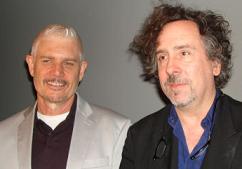Keeping film history alive, a major priority: MoMA
 According to Ronald Magliozzi, the New York Museum of Modern Art curator of Tim Burton: The Exhibition currently showing at the Australian Centre for the Moving Image in Melbourne, the preservation of audiovisual history should be a priority that requires international cooperation.
According to Ronald Magliozzi, the New York Museum of Modern Art curator of Tim Burton: The Exhibition currently showing at the Australian Centre for the Moving Image in Melbourne, the preservation of audiovisual history should be a priority that requires international cooperation.
“Sharing the information about moving image work across archives all around the world is very important; that way we can sort the best materials that exist and we don’t duplicate work,” Magliozzi told Encore.
Curators must accept that it’s impossible to preserve everything until the resources are available to do so. The job then becomes a matter of prioritisation.
“The endless problem is money, so you must prioritise your preservation efforts based on the importance of the work, its rarity and the danger that it won’t survive if it isn’t preserved in a timely fashion. The importance is measured in an artistic sense, its relevance to the history of its national cinema, to the work of an individual artist or to a race or an ethnic group. There are all kinds of considerations,” he added.

